

12-08-2025: Chefs Wharehouse (CHEF): Wholesale or Retail?
Description of Company
Recent Charts
Corporate Website Excerpts
News Items Zenith Index
Management's Discussion: Results of Operations Analysts' Ratings
Below is an interim report on a portion of Zenith's Fourth Quarter covering 09-29-2025 to 10-29-2025. We commit around $30,000 per stock and do not compound investments so share alotments stay constant. Reports are made at odd intervals and trades closed out at as yet unpredetermined intervals, then given a fresh start each quarter with cumulative totals zeroed out.
11-05-2025: Helix Energy Solutions Group (HLX): New Gulf of America Contract
11-04-2025: AMC Networks Inc. (AMCX): Declining Streaming Customer Base
10-31-2025: Zoom Communications, Inc. (ZM): Free Meeting Rooms Lead to Upscale Add-Ons
10-20-2025: Snowflake Inc. Cl A (SNOW): Understanding What They Do Is Difficult
09-12-2025: Taylor Morrison Home Corp. (TMHC): Real Estate Housing Price Cycle Peaking?
08-27-2025: Axalta Coating Systems Ltd. (AXTA: Protective Coatings are a Big Business
08-07-2025: Vodafone Group PLC ADR (VOD): Connecting the World
08-01-2025: MotorCar Parts of America (MPAA): Small Cap Heading Toward Big Cap
07-28-2025: Plantir Technologies Inc. CL A (PLTR) Another "Dot".Com Era" Lookalike?
05-25-2025: Why Most Seniors Have a Short Lifespan After 80 and 5 Secrets to Living Beyond
04-30-2025: Plan to Insulate Manipulated U.S. Markets
04-27-2025: How Fools Become World's Most Powerful Leaders
10-25-2024: W D 40 Company: Swing Tradeable?
10-19-2024: Centrus Energy, Inc. (LEU): World's Only Publicly Held Nuclear Fuels Processor
10-11-2024: Pennant Investment Corp.: 7 % Per Annum Paid Out Monthly

 Our reaction to the company's website is that its front page full of delicacies and pastries suggests finished products aiming at individual retail buyers rather than basic cooking materials for restaurant and hotel buyers, which upon further inspection is clearly not the case although the company does entertain retail customers. So, if one were an individiual retail customer, next question might be, "Is this a place where I can find bargains?" The fare content looks rather gourmet'ish and expensive. How much can I save there? This universal question is met with a wall of secrecy because apparently the sale price is negotiated. One has to join and become an "accepted" member by applying over their website to join and see any prices. Given that sort of "bartering", it seems clear why prices to one customer should not be revealed to another. That is the nature of this business. Given those restrictions, our next logical question is, "How much of the company's business is wholesale and how much retail?"
What we know about Chefs' Warehouse’s core business
Chefs’ Warehouse describes itself as a “specialty wholesale food distributor” whose customers are “restaurants, hotels, country clubs, fine-dining establishments, caterers, specialty food stores, bakeries, patisseries, chocolatiers, cruise lines, casinos” and similar.
Their public materials repeatedly emphasize serving “chefs and operators” — not the typical consumer grocery shopper.
Chefs Warehouse
Historically, their filings (e.g. a 10-K) indicate that — “excluding our direct-to-consumer business” — they distribute to “over 20,000 distinct customer locations” across the U.S. and Canada.
Their product catalog is very broad — thousands to tens of thousands of SKUs: proteins, specialty foods, bakery & pastry supplies, cheeses, imported goods, produce, etc.
Their growth strategy appears heavily oriented toward serving the food-service industry (restaurants / hotels / clubs / professional chefs), including via acquisitions of other distributors that supply produce, proteins, broadline goods.
All of this supports the fact that their primary business model is B2B wholesale / food-service
In their public history is the acquisition of Allen Brothers — a premium-meat distributor/processor acquired by Chefs’ Warehouse. Allen Brothers itself sold restaurant-grade meats directly to consumers through its website and mail-order/catalog business.
Chefs' Warehouse Investors
The general descriptions of Chefs’ Warehouse sometimes include “specialty food stores” among their customers — which could include gourmet retailers or boutiques, perhaps serving consumers.
Chefs Warehouse
There have been references (in older sources) to a “direct-to-consumer business” separate from their wholesale/food-service distribution business.
So there is some presence likely servicing specialty stores or possibly direct-to-consumer / retail-oriented channels, beyond strictly restaurants / hotels / chefs. But these seem secondary or supplementary.
At the time we are reviewing this company stock, we happened to run across a video on YouTube purporting to describe Warren Buffet's three key metrics for selecting a stock to buy. They were:
Return on Equity > 15% going back at least ten years (but > 20% perferrable )
P/E Ratio < 20 (with a good explanation as to why so low in today's market)
Debt / Equity < 50%
... Warren was apparently content to wait until the entire market allowed stocks to drop to these levels before buying in, even if it took years.
For Chefs Wharehouse the numbers rcently were:
Return on Equity 14.12%, but going back six years was as low as -24%.
P/E Ratio = 34.38
Debt/Equity = 166 %
... so Warren would be avoiding this stock for the time being.
Our reaction to the company's website is that its front page full of delicacies and pastries suggests finished products aiming at individual retail buyers rather than basic cooking materials for restaurant and hotel buyers, which upon further inspection is clearly not the case although the company does entertain retail customers. So, if one were an individiual retail customer, next question might be, "Is this a place where I can find bargains?" The fare content looks rather gourmet'ish and expensive. How much can I save there? This universal question is met with a wall of secrecy because apparently the sale price is negotiated. One has to join and become an "accepted" member by applying over their website to join and see any prices. Given that sort of "bartering", it seems clear why prices to one customer should not be revealed to another. That is the nature of this business. Given those restrictions, our next logical question is, "How much of the company's business is wholesale and how much retail?"
What we know about Chefs' Warehouse’s core business
Chefs’ Warehouse describes itself as a “specialty wholesale food distributor” whose customers are “restaurants, hotels, country clubs, fine-dining establishments, caterers, specialty food stores, bakeries, patisseries, chocolatiers, cruise lines, casinos” and similar.
Their public materials repeatedly emphasize serving “chefs and operators” — not the typical consumer grocery shopper.
Chefs Warehouse
Historically, their filings (e.g. a 10-K) indicate that — “excluding our direct-to-consumer business” — they distribute to “over 20,000 distinct customer locations” across the U.S. and Canada.
Their product catalog is very broad — thousands to tens of thousands of SKUs: proteins, specialty foods, bakery & pastry supplies, cheeses, imported goods, produce, etc.
Their growth strategy appears heavily oriented toward serving the food-service industry (restaurants / hotels / clubs / professional chefs), including via acquisitions of other distributors that supply produce, proteins, broadline goods.
All of this supports the fact that their primary business model is B2B wholesale / food-service
In their public history is the acquisition of Allen Brothers — a premium-meat distributor/processor acquired by Chefs’ Warehouse. Allen Brothers itself sold restaurant-grade meats directly to consumers through its website and mail-order/catalog business.
Chefs' Warehouse Investors
The general descriptions of Chefs’ Warehouse sometimes include “specialty food stores” among their customers — which could include gourmet retailers or boutiques, perhaps serving consumers.
Chefs Warehouse
There have been references (in older sources) to a “direct-to-consumer business” separate from their wholesale/food-service distribution business.
So there is some presence likely servicing specialty stores or possibly direct-to-consumer / retail-oriented channels, beyond strictly restaurants / hotels / chefs. But these seem secondary or supplementary.
At the time we are reviewing this company stock, we happened to run across a video on YouTube purporting to describe Warren Buffet's three key metrics for selecting a stock to buy. They were:
Return on Equity > 15% going back at least ten years (but > 20% perferrable )
P/E Ratio < 20 (with a good explanation as to why so low in today's market)
Debt / Equity < 50%
... Warren was apparently content to wait until the entire market allowed stocks to drop to these levels before buying in, even if it took years.
For Chefs Wharehouse the numbers rcently were:
Return on Equity 14.12%, but going back six years was as low as -24%.
P/E Ratio = 34.38
Debt/Equity = 166 %
... so Warren would be avoiding this stock for the time being.
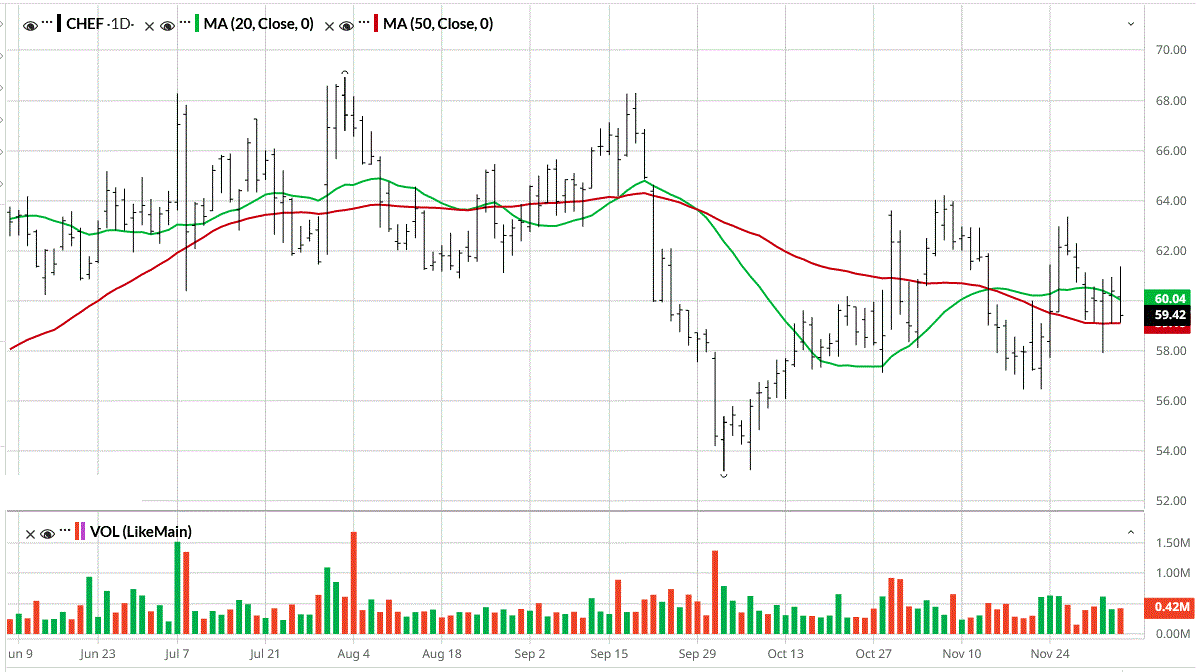
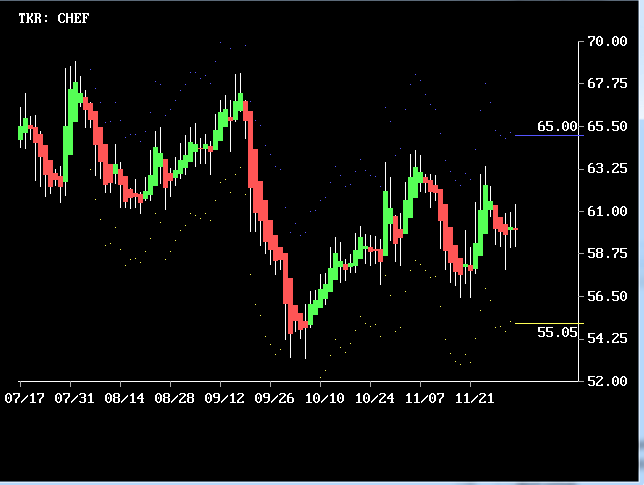
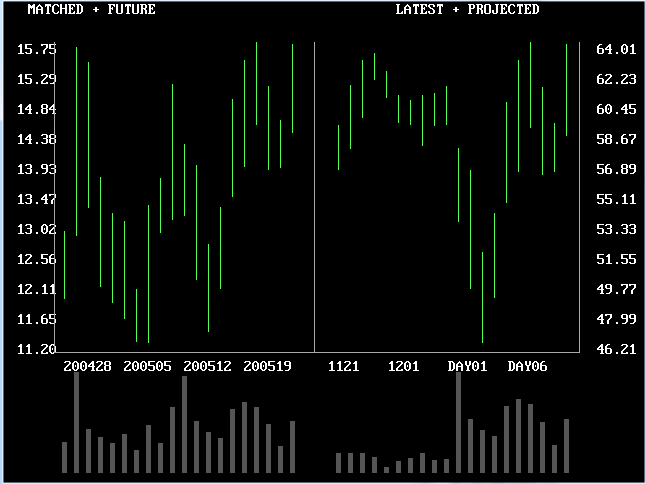
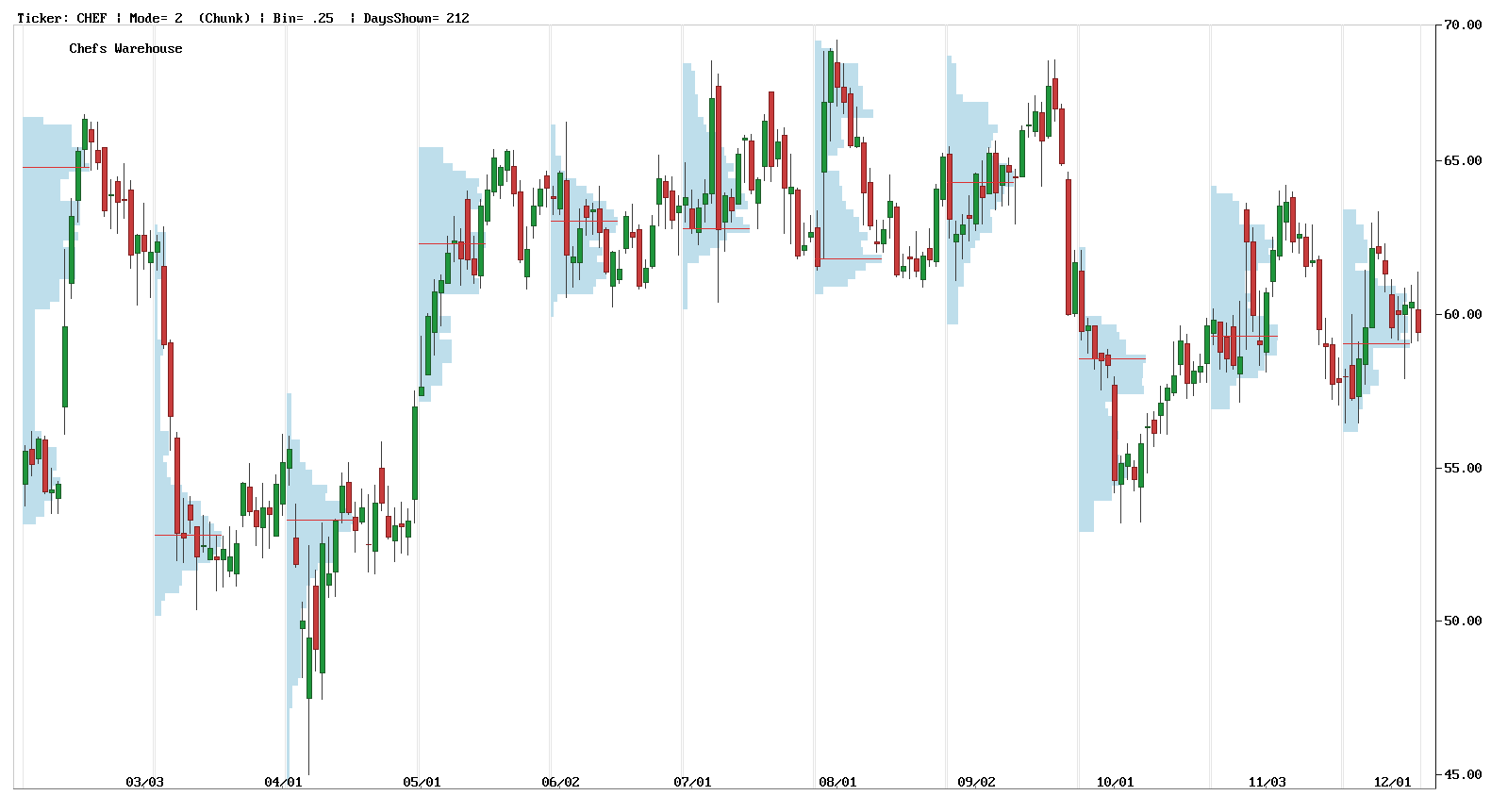
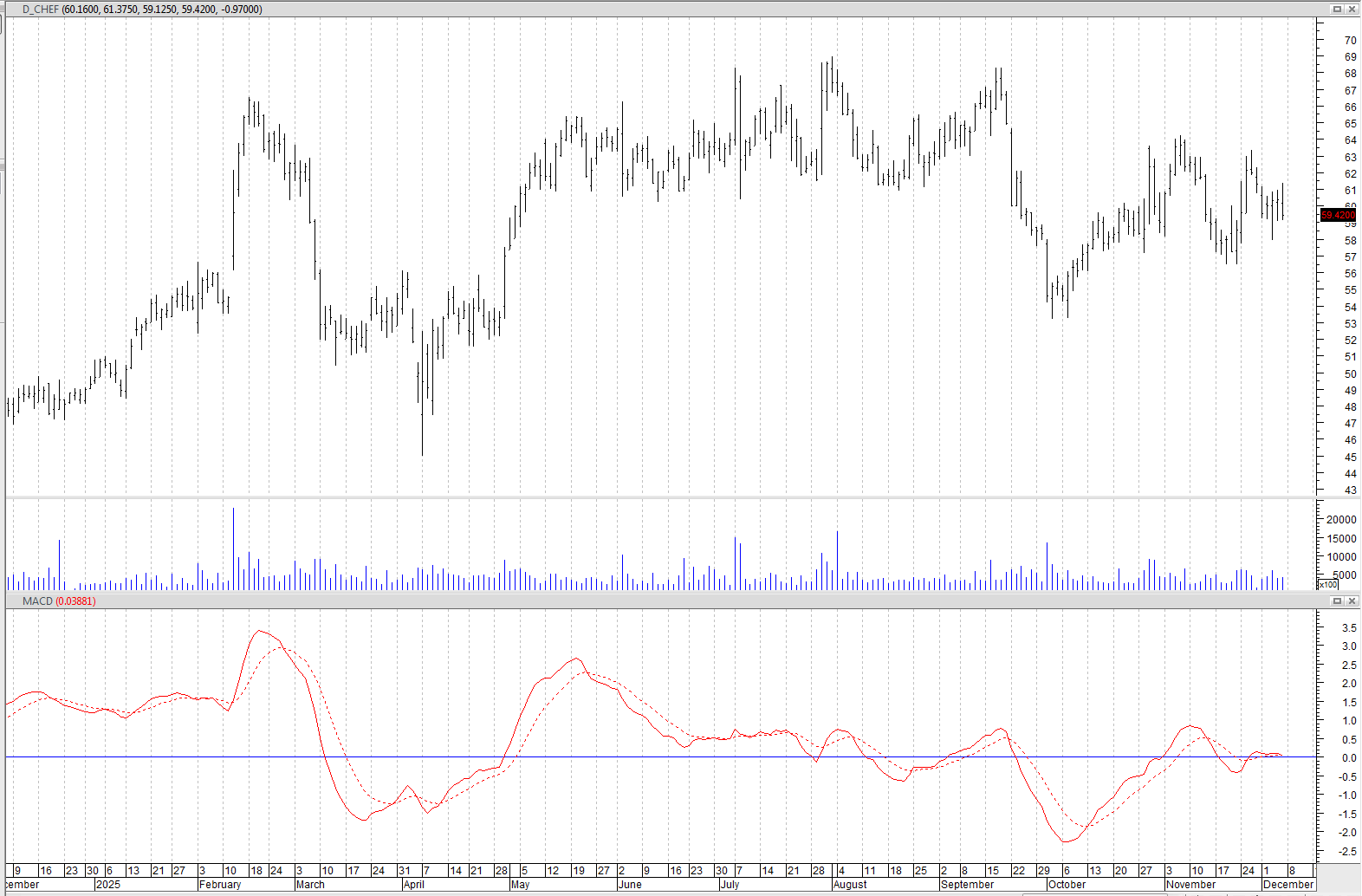



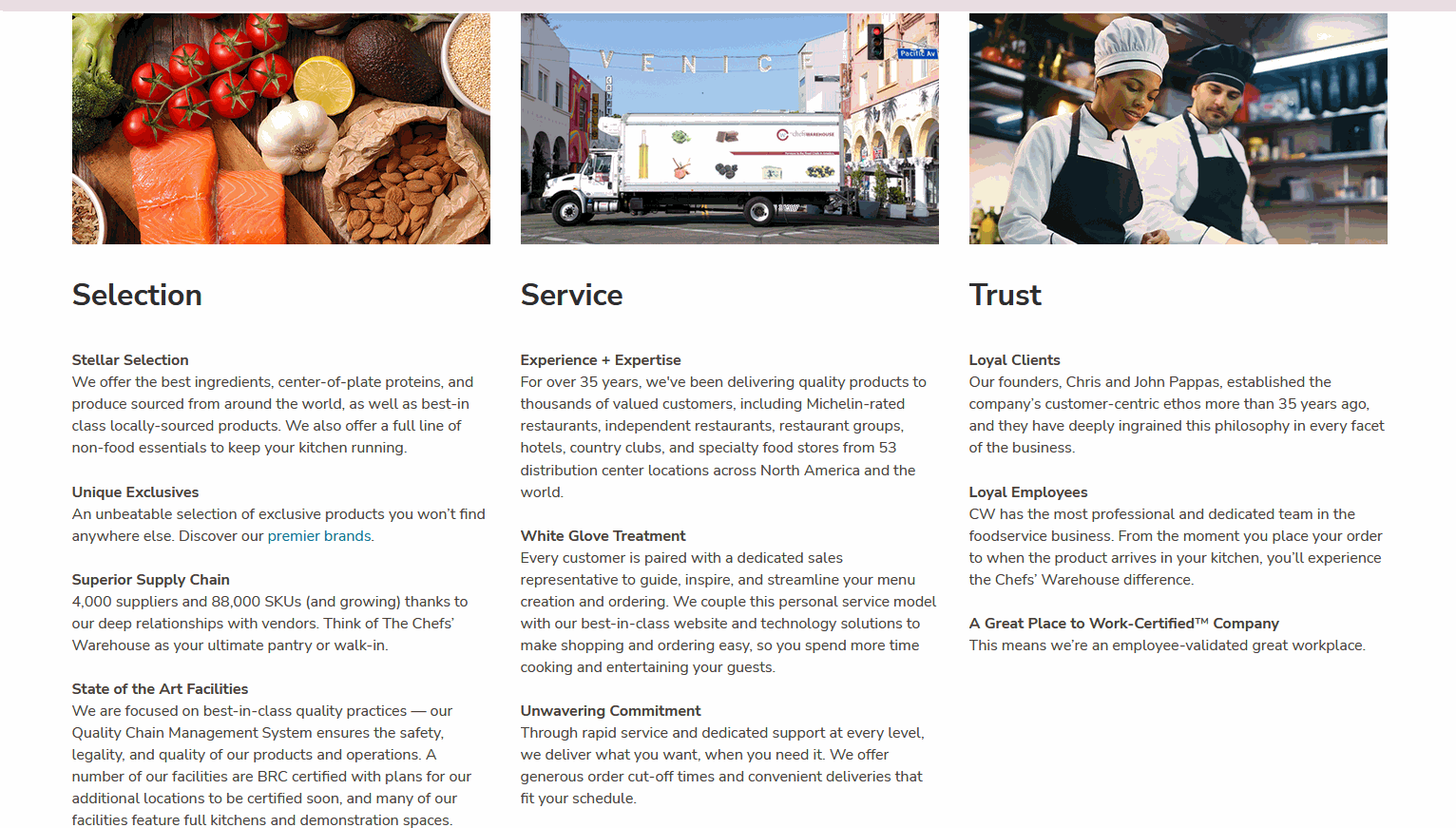




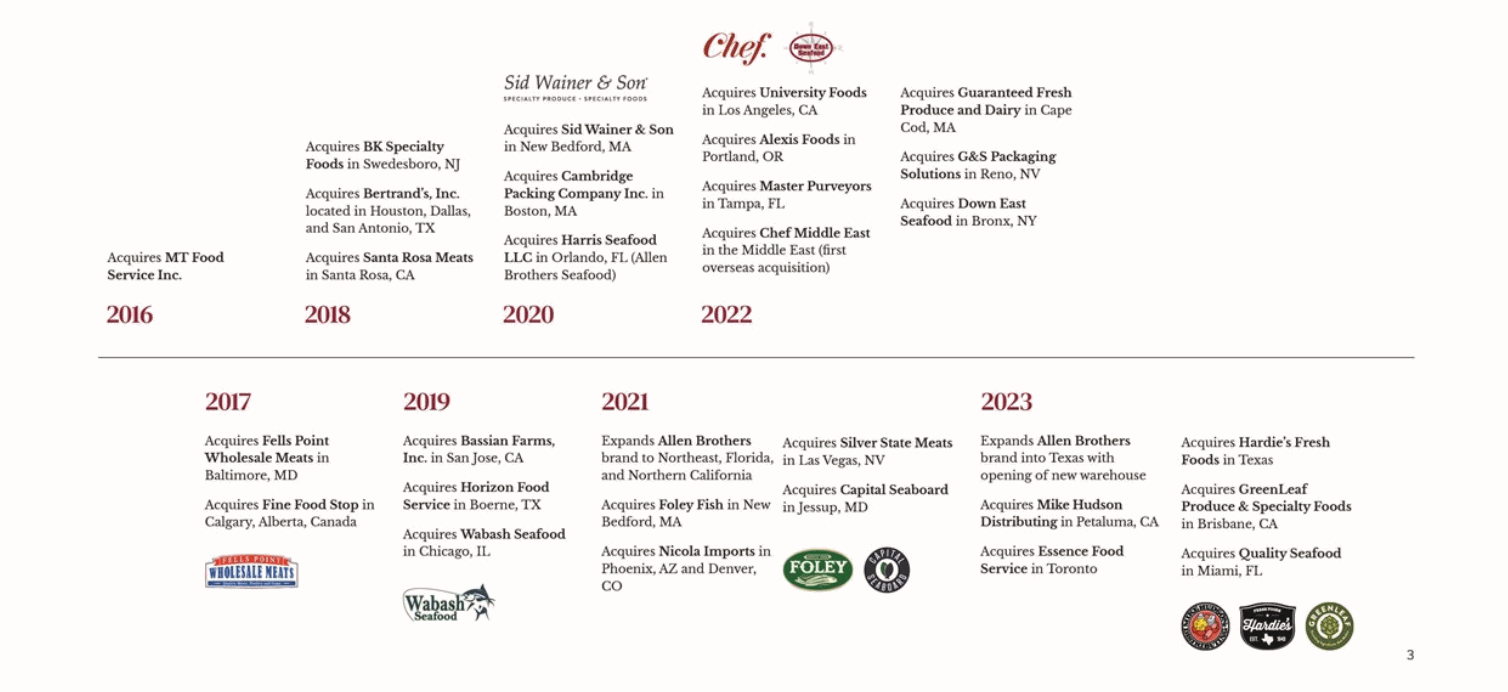


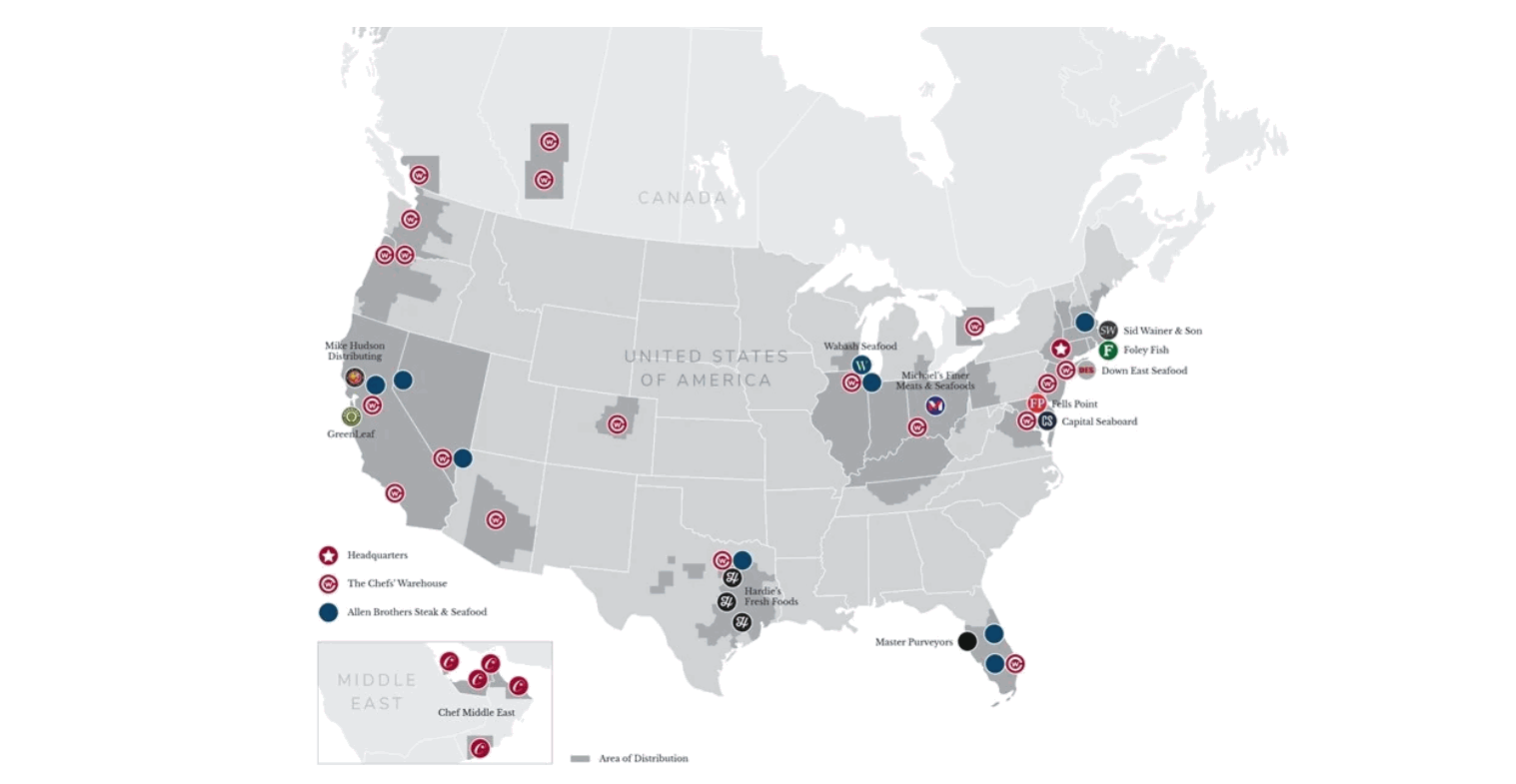

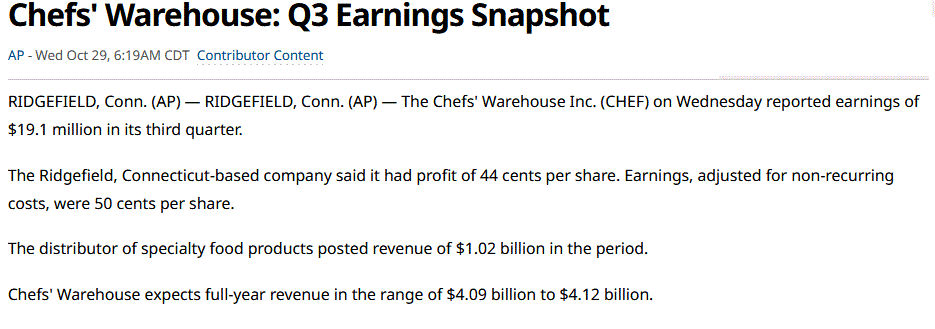
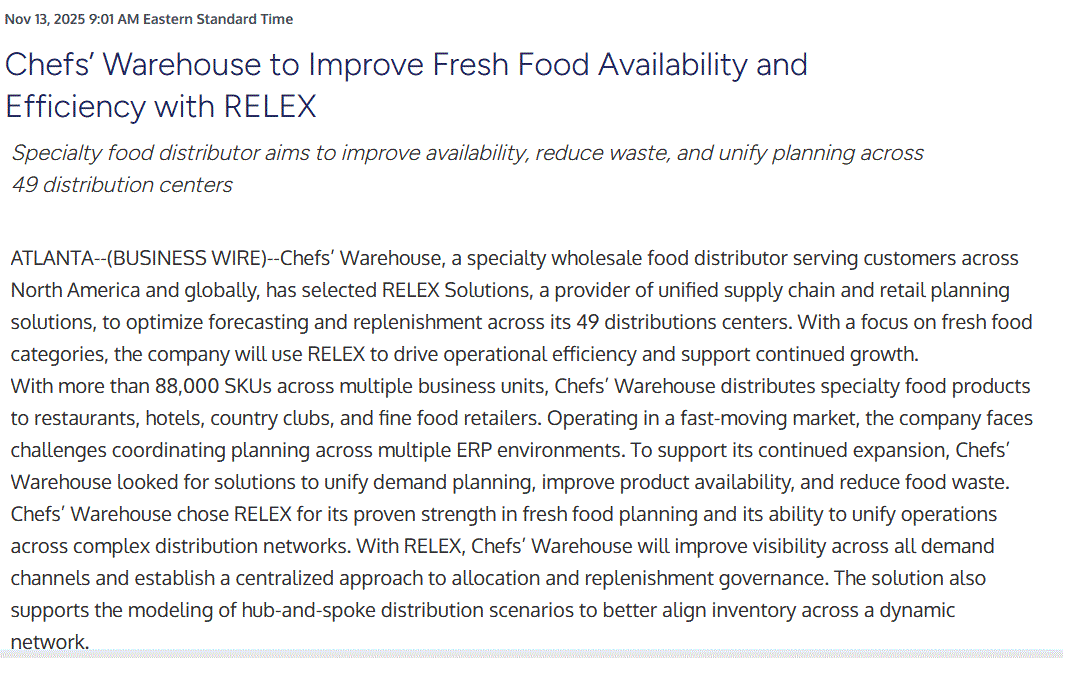
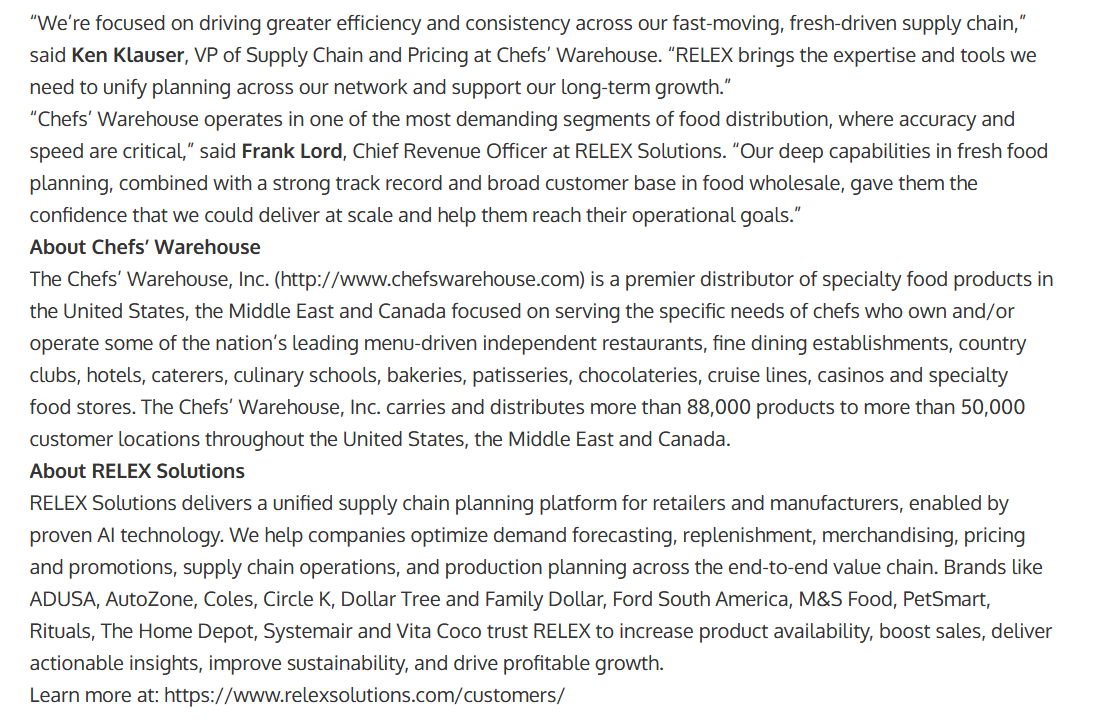
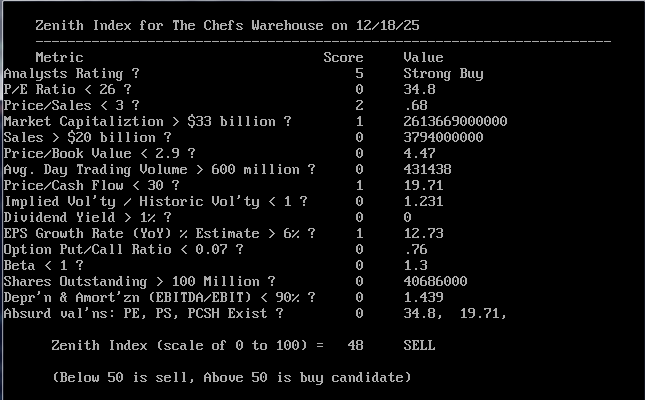
Overview and Recent Developments
Overview
We are a premier distributor of specialty foods in the leading culinary markets in the United States, the Middle East and Canada. We offer more than 88,000 SKUs, ranging from high-quality specialty foods and ingredients to basic ingredients and staples, produce and center-of-the-plate proteins. We serve more than 50,000 Core Customer locations, primarily located in our twenty-three geographic markets across the United States, the Middle East and Canada, and the majority of our customers are independent restaurants and fine dining establishments. Our Allen Brothers subsidiary sells certain of our center-of-the-plate products directly to consumers.
We believe several key differentiating factors of our business model have enabled us to execute our strategy consistently and profitably across our expanding customer base. These factors consist of a portfolio of distinctive and hard-to-find specialty food products, an extensive selection of center-of-the-plate proteins, a highly trained and motivated sales force, strong sourcing capabilities, a fully integrated warehouse management system, a highly sophisticated distribution and logistics platform and a focused, seasoned management team.
In recent years, our sales to existing and new customers have increased through the continued growth in demand for specialty food and center-of-the-plate products in general; increased market share driven by our large percentage of sophisticated and experienced sales professionals, our high-quality customer service and our extensive breadth and depth of product offerings, including, as a result of our acquisitions; the expansion of our existing distribution centers; our entry into new distribution centers, including the construction of new distribution centers in Portland, San Francisco, United Arab Emirates, Philadelphia, Los Angeles and Miami; and the import and sale of our proprietary brands. Through these efforts, we believe that we have been able to expand our customer base, enhance and diversify our product selections, broaden our geographic penetration and increase our market share.
Acquisitions
On May 1, 2023, we acquired substantially all of the equity interests of Oakville Produce Partners, LLC (“GreenLeaf”), a leading produce and specialty food distributor in Northern California. The final purchase price was $88.2 million consisting of $72.2 million paid in cash at closing, $3.6 million paid upon settlement of a net working capital true-up, the issuance of a $10.0 million unsecured note and 75,008 shares of the Company’s common stock with an approximate value of $2.5 million based on the trading price of the Company’s common stock on the date of acquisition.
On March 20, 2023, we acquired substantially all of the assets of Hardie’s F&V, LLC (“Hardie’s”), a specialty produce distributor with operations in Texas. The final purchase price was approximately $41.4 million, consisting of $38.0 million paid in cash at closing, $0.6 million received upon settlement of a net working capital true-up and an earn-out liability valued at approximately $4.0 million as of the acquisition date. If earned, the earn-out liability could total up to $10.0 million over a two-year period.
On November 1, 2022, we acquired substantially all of the shares of Chef Middle East LLC (“CME”), a specialty food distributor with operations in the United Arab Emirates, Qatar and Oman. The final purchase price was approximately $116.5 million, consisting of $108.7 million paid in cash at closing, $0.2 million paid upon settlement of a net working capital true-up, and an earn-out liability valued at $7.6 million as of the date of acquisition. The earn-out liability was earned and paid in full during the fourth quarter of fiscal 2023 for a total of $10.0 million.
Our Growth Strategies and Outlook
We continue to invest in our people, facilities and technology in an effort to achieve the following objectives and maintain our premier position within the specialty foodservice distribution market:
sales and service territory expansion;
•operational excellence and high customer service levels;
•expanded purchasing programs and improved buying power;
•product innovation and new product category introduction;
•operational efficiencies through system enhancements; and
•operating expense reduction through the centralization of general and administrative functions.
Our growth has allowed us to improve upon our organization’s infrastructure, open new distribution facilities and pursue selective acquisitions. Over the last several years, we have increased our distribution capacity to approximately 3.0 million square feet in 49 distribution facilities as of December 27, 2024. Over the period from fiscal 2022 through fiscal 2024, we have invested significantly in acquisitions, infrastructure and management.
Key Factors Affecting Our Performance
Due to our focus on menu-driven independent restaurants, fine dining establishments, country clubs, hotels, caterers, culinary schools, bakeries, patisseries, chocolateries, cruise lines, casinos and specialty food stores, our results of operations are materially impacted by the success of the food-away-from-home industry in the United States, Middle East and Canada, which is materially impacted by general economic conditions, weather, discretionary spending levels and consumer confidence. When economic conditions deteriorate, our customers’ businesses are negatively impacted as fewer people eat away-from-home and those who do spend less money. As economic conditions begin to improve, our customers’ businesses historically have likewise improved, which contributes to improvements in our business. Similarly, the direct-to-consumer business of our Allen Brothers subsidiary is significantly dependent on consumers’ discretionary spending habits, and weakness or uncertainty in the economy could lead to consumers buying less from Allen Brothers.
Volatile food costs may have a direct impact upon our profitability. Prolonged periods of product cost inflation may have a negative impact on our profit margins and results of operations to the extent we are unable to pass on all or a portion of such product cost increases to our customers. In addition, product cost inflation may negatively impact consumer discretionary spending decisions within our customers’ establishments, which could adversely impact our sales. Conversely, our profit levels may be negatively impacted during periods of product cost deflation even though our gross profit as a percentage of sales may remain relatively constant. However, some of our products, particularly certain of our center-of-the-plate protein items, are priced on a “cost plus” markup, which helps mitigate the negative impact of deflation.
Given our wide selection of product categories, as well as the continuous introduction of new products, we can experience shifts in product sales mix that have an impact on net sales and gross profit margins. This mix shift is most significantly impacted by the introduction of new categories of products in markets that we have more recently entered, the shift in product mix resulting from acquisitions, as well as the continued growth in item penetration on higher velocity items such as dairy products.
The foodservice distribution industry is fragmented but consolidating, and we have supplemented our internal growth through selective strategic acquisitions. We believe that the consolidation trends in the foodservice distribution industry will continue to present acquisition opportunities for us, which may allow us to grow our business at a faster pace than we would otherwise be able to grow the business organically.
Performance Indicators
In addition to evaluating our income from operations, our management team analyzes our performance based on net sales growth, gross profit and gross profit margin.
•Net sales growth. Our net sales growth is driven principally by changes in volume and, to a lesser degree, changes in price related to the impact of inflation in commodity prices and product mix. In particular, product cost inflation and deflation impacts our results of operations and, depending on the amount of inflation or deflation, such impact may be material. For example, inflation may increase the dollar value of our sales, and deflation may cause the dollar value of our sales to fall despite our unit sales remaining constant or growing.
•Gross profit and gross profit margin. Our gross profit and gross profit as a percentage of net sales, or gross profit margin, are driven principally by changes in volume and fluctuations in food and commodity prices and our ability to pass on any price increases to our customers in an inflationary environment and maintain or increase gross profit margin when our costs decline. Our gross profit margin is also a function of the product mix of our net sales in any period. Given our wide selection of product categories, as well as the continuous introduction of new products, we can experience shifts in product sales mix that have an impact on net sales and gross profit margins. This mix shift is most significantly impacted by the introduction of new categories of products in markets that we have more recently entered, impact of product mix from acquisitions, as well as the continued growth in item penetration on higher velocity items such as dairy products.
Results of Operations
Organic growth contributed $258.9 million, or 7.5%, to sales growth and the remaining growth of $101.6 million, or 3.0%, resulted from prior year acquisitions. Organic case count increased approximately 4.6% in our specialty category. In addition, specialty unique customers and placements increased 6.6% and 11.6%, respectively, compared to the prior year. Organic pounds sold in our center-of-the-plate category increased 3.3% compared to the prior year. Estimated inflation was 3.5% in our specialty category and 3.0% in our center-of-the-plate category compared to fiscal 2023.
Gross profit dollars increased primarily as a result of sales growth and price inflation. Gross profit margin increased approximately 37 basis points due to sales growth combined with improved pricing methods and inventory management, as well as changes in volume mix between specialty and center-of-the-plate category sales. Gross profit margins increased 32 basis points in the Company’s specialty category and increased 12 basis points in the Company’s center-of-the-plate category compared to the prior year.
Selling, General and Administrative Expenses
The increase in selling, general and administrative expenses was primarily due to higher depreciation and amortization expenses driven by acquisitions and facility investments, and higher costs associated with compensation and benefits, facilities and distribution to support sales growth. Our ratio of selling, general and administrative expenses to net sales increased 20 basis points due to increased near-term costs associated with our investments in facilities and acquisitions.
Other Operating Expenses, Net
The decrease in other operating expenses relates primarily to non-cash credits of $3.3 million for changes in the fair value of our contingent earn-out liabilities in fiscal 2024 compared to non-cash charges of $3.1 million in the prior year and a year over year decrease of $2.6 million primarily related to third-party deal costs incurred in connection with business acquisitions and financing arrangements, partially offset by charges associated with employee severance in fiscal 2024. Additionally, fiscal 2023 reflected an impairment charge on customer relationship intangible assets of $1.8 million related to the loss of a significant Hardie’s customer post-acquisition.
Interest Expense
Interest expense increased primarily due to higher average principal amounts of outstanding debt due to an increase in finance leases and amounts drawn on our revolving credit facility and higher rates of interest charged on the variable rate portion of our outstanding debt.
Provision for Income Tax Expense
The lower effective tax rate for fiscal 2024 was primarily driven by a $2.1 million charge in fiscal 2023 for return-to-provision adjustments identified in the completion of our fiscal 2022 tax return and the impact of those adjustments on the fiscal 2023 estimated annual effective tax rate.
Liquidity and Capital Resources
We finance our day-to-day operations and growth primarily with cash flows from operations, borrowings under our senior secured credit facilities and other indebtedness, operating leases, trade payables and equity financing.
Indebtedness
As of December 27, 2024, we have various floating- and fixed-rate debt instruments with varying maturities for an aggregate principal amount of $672.5 million. We had outstanding letters of credit of approximately $34.4 million and $30.1 million at December 27, 2024 and December 29, 2023, respectively. Substantially all of our assets are pledged as collateral to secure our borrowings under our credit facilities. See Note 9 “Debt Obligations” to our consolidated financial statements for a full description of our debt instruments.
Significant Financing Transactions
In December 2024, the 1.875% Convertible Senior Notes ( the “2024 Convertible Notes”) matured and we issued 858,360 shares of our common stock, in accordance with the exercise of conversion rights provisions of the 2024 Convertible Notes, and paid approximately $2.1 million, which included accrued interest on the 2024 Convertible Notes.
In March 2024, we amended our senior secured term loan agreement, which reduced the interest rate spread by 75 basis points on our senior secured term loan facility. In October 2024, we further amended our senior secured term loan agreement, which reduced the interest rate spread by an additional 50 basis points. Additionally, during fiscal 2024, we made voluntary principal prepayments of $14.0 million towards the senior secured term loan.
In April 2024, we made a scheduled principal payment of $5.0 million towards the unsecured note issued in connection with the GreenLeaf acquisition. The note is presented under the caption “Finance leases and other financing obligations” in the table above.
In November 2023, we announced a two-year share repurchase program in an amount up to $100.0 million, targeting $25.0 million to $100.0 million of share repurchases by the end of fiscal 2025. During fiscal 2024, we repurchased and retired 426,235 shares of our common stock at an average purchase price of $40.78 per share. The share repurchases were funded by our available cash. The remaining share purchase authorization was $82.6 million at December 27, 2024. We are not obligated to repurchase any specific number of shares and may suspend or discontinue the program at any time.
On July 7, 2023, we increased the aggregate commitments on our asset-based loan facility to $300.0 million.
On December 13, 2022, we issued $287.5 million aggregate principal amount of 2.375% Convertible Senior Notes (the “2028 Convertible Notes”). Concurrently with the issuance of the 2028 Convertible Notes, we exchanged or repurchased approximately $158.3 million principal amount of the 2024 Convertible Notes for an aggregate consideration consisting of approximately $159.7 million in cash, which includes accrued interest on the 2024 Convertible Notes, and approximately 324,066 shares of the Company’s common stock. We incurred transaction costs of approximately $7.0 million which were capitalized as deferred financing fees to be amortized over the term of the 2028 Senior Notes.
On August 23, 2022, we refinanced our senior secured term loans in an aggregate principal amount of $300.0 million maturing in August 2029, comprising of a refinancing of the then existing term loans balance of $167.4 million and an incremental borrowing of $132.6 million. We deferred lender and third-party fees of $10.9 million as debt issuance costs to be amortized over the term of the term loan. Arrangement and third-party transaction costs of $4.5 million were expensed as incurred.
Liquidity
We believe our existing balances of cash and cash equivalents, working capital and the availability under our asset-based loan facility, are sufficient to satisfy our working capital needs, capital expenditures, debt service and other liquidity requirements associated with our current operations over the next twelve months.
Our capital expenditures, excluding cash paid for acquisitions, were approximately $49.5 million for fiscal 2024. We believe our capital expenditures, excluding cash paid for acquisitions, for fiscal 2025 will be approximately $40.0 million to $50.0 million.
Cash Flows
Our cash provided by operating activities is predominately driven by net sales to our customers. Our cash used in operating activities is primarily driven by our payments to suppliers for our inventory, employee compensation, payments to support our facilities, our distribution network, interest on our indebtedness, payments to tax authorities and other general corporate expenditures. Net cash provided by operations was $153.1 million for the fiscal year ended December 27, 2024 compared to $61.6 million for the fiscal year ended December 29, 2023. The increase in cash provided by operating activities was primarily due to gross profit growth, favorable timing of supplier payments at fiscal year-end and higher accrued compensation compared to the prior year.
Net cash used in investing activities was $49.8 million in fiscal 2024 driven by $49.5 million in capital expenditures.
Net cash used by financing activities was $38.5 million for fiscal 2024 driven primarily by $23.0 million of payments of debt and other financing obligations, $26.4 million of payments under our asset-based loan and revolving credit facilities, $17.4 million used to repurchase our common stock, $7.4 million paid for shares surrendered to pay tax withholding related to the vesting of equity incentive plan awards, $7.1 million of finance lease payments and $3.8 million of earn-out payments, partially offset by $46.4 million of incremental borrowings on our asset-based loan and revolving credit facilities.
Off-Balance Sheet Arrangements
As of December 27, 2024, we did not have any off-balance sheet arrangements.
Allowance for Credit Losses
We analyze customer creditworthiness, accounts receivable balances, payment history, payment terms and historical bad debt levels when evaluating the adequacy of our allowance for credit losses. In instances where a reserve has been recorded for a particular customer, future sales to the customer are either conducted using cash-on-delivery terms or the account is closely monitored so that agreed-upon payments are received prior to orders being released. A failure to pay results in held or cancelled orders. We also estimate receivables that will ultimately be uncollectible based upon historical write-off experience. Management incorporates current macro-economic factors in existence as of the balance sheet date that may impact the food-away-from-home industry and/or its customers. We may be required to increase or decrease our allowance for credit losses due to various factors, including the overall economic environment and particular circumstances of individual customers. Our accounts receivable balance was $366.3 million and $334.0 million, net of the allowance for credit losses of $22.3 million and $21.4 million, as of December 27, 2024 and December 29, 2023, respectively.
Business Combinations
We account for acquisitions in accordance with Accounting Standards Codification Topic 805 “Business Combinations.” Assets acquired and liabilities assumed are recorded at their estimated fair values, as of the acquisition date. The judgments made in determining the estimated fair value of assets acquired and liabilities assumed, including estimated useful life, may have a material impact on our consolidated balance sheet and may materially impact the amount of depreciation and amortization expense recognized in periods subsequent to the acquisition. We determine the fair value of intangible assets using an income approach and, when appropriate, we engage a third party valuation firm. Generally, we utilize the multi-period excess earnings method to determine the fair value of customer relationships and the relief from royalty method to determine the fair value of trade names. These valuation methods contain significant assumptions and estimates including forecasts of expected future cash flows and discount rates. Determining the useful life of an intangible asset also requires judgment, as different types of intangible assets will have different useful lives. The excess of the purchase price over the fair values of identifiable assets and liabilities is recorded as goodwill.
We account for contingent consideration relating to business combinations as a liability and an increase to goodwill at the date of the acquisition and continually remeasure the liability at each balance sheet date by recording changes in the fair value through our consolidated statements of operations. We determine the fair value of contingent consideration based on future operating projections under various potential scenarios, including the use of Monte Carlo simulation models, and weight the probability of these outcomes. The ultimate settlement of contingent earn-out liabilities relating to business combinations may be for amounts which are materially different from the amounts initially recorded and may cause volatility in our results of operations.
Valuation of Goodwill and Intangible Assets
We are required to test goodwill for impairment at each of our reporting units annually, or more frequently when circumstances indicate an impairment may have occurred. We have elected to perform our annual tests for indications of goodwill impairment during the fourth quarter of each fiscal year.
Goodwill is tested at the reporting unit level, which is an operating segment or a component of an operating segment. When analyzing whether to aggregate components into single reporting units, management considers whether each component has similar economic characteristics. We have evaluated the economic characteristics of our different geographic markets, including our recently acquired businesses, along with the similarity of the operations and margins, nature of the products, type of
41
customer and methods of distribution of products and the regulatory environment in which we operate. As of December 27, 2024, we maintain four reporting units.
In testing goodwill for impairment, we may elect to perform a qualitative assessment to evaluate whether it is more likely than not that the fair value of each reporting unit is less than its carrying amount. The qualitative analysis considers various factors including macroeconomic conditions, market conditions, industry trends, cost factors and financial performance, among others. If our qualitative assessment indicates that goodwill impairment is more likely than not, we proceed to perform a quantitative assessment to determine the fair value of the reporting unit.
When a quantitative analysis is performed, we estimate the fair value of our reporting units using a combination of income and market approaches. The income approach incorporates the use of a discounted cash flow model that involves many management assumptions that are based upon future growth projections. Assumptions include estimates of future revenue based upon budget projections and growth rates. We develop estimates of future levels of gross and operating profits and projected capital expenditures. This methodology includes the use of estimated discount rates based upon industry and competitor analysis as well as other factors. The market approach of determining fair value, which includes the guideline public company method, is based on comparable market multiples for companies engaged in similar businesses. A goodwill impairment loss, if any, would be recognized for the amount by which a reporting unit’s carrying value exceeds its fair value.
For the fiscal year ended December 27, 2024, the Company assessed the recoverability of goodwill using a quantitative analysis and determined that the fair value of its reporting units substantially exceeded their respective carry values. For the fiscal year ended December 29, 2023, the Company assessed the recoverability of goodwill using a qualitative analysis and determined that it is more likely than not that the fair value of its reporting units exceeded their respective carry values. As a result, no goodwill impairments were identified for those periods. Total goodwill as of December 27, 2024 and December 29, 2023 was $356.3 million and $356.0 million, respectively.
Intangible assets with finite lives are tested for impairment whenever events or changes in circumstances indicate that the carrying value may not be recoverable. Cash flows expected to be generated by the related assets are estimated over the assets useful lives based on updated projections. If the evaluation indicates that the carrying amount of the asset may not be recoverable, the potential impairment is measured based on a projected discounted cash flow model.
During fiscal 2023, we incurred a customer relationships intangible asset impairment charge of $1.8 million, $1.3 million net of tax, related to the loss of a significant Hardie’s Fresh Foods customer post acquisition.
There have been no other events or changes in circumstances during fiscal 2024 or 2023 indicating that the carrying value of our finite-lived intangible assets are not recoverable. Total finite-lived intangible assets as of December 27, 2024 and December 29, 2023 were $160.4 million and $184.9 million, respectively.
The assessment of the recoverability of goodwill and intangible assets contain uncertainties requiring management to make assumptions and to apply judgment to estimate economic factors and the profitability of future operations. Actual results could differ from these assumptions and projections, resulting in us revising our assumptions and, if required, recognizing an impairment loss.
Income Taxes
The determination of our provision for income taxes requires significant judgment, the use of estimates and the interpretation and application of complex tax laws. Our provision for income taxes primarily reflects a combination of income earned and taxed in the various U.S. federal, state, and Middle East jurisdictions. Jurisdictional tax law changes, increases or decreases in permanent differences between book and tax items, accruals or adjustments of accruals for unrecognized tax benefits, and our change in the mix of earnings from these taxing jurisdictions all affect the overall effective tax rate.
We estimate our ability to recover deferred tax assets within the jurisdiction from which they arise. This evaluation considers several factors, including recent results of operations, scheduled reversal of deferred tax liabilities, future taxable income and tax planning strategies. As of December 27, 2024, we did not have a valuation allowance. As of December 29, 2023, we had a valuation allowance of $2.1 million, relating to certain net operating losses that may not be realizable in the future based on taxable income forecasts and certain state net operating loss limitations.
Management has discussed the development and selection of these critical accounting policies with our board of directors, and the board of directors has reviewed the above disclosure. Our consolidated financial statements contain other items that require estimation, but are not as critical as those discussed above. These other items include our calculations for bonus accruals,
QUANTITATIVE AND QUALITATIVE DISCLOSURES ABOUT MARKET RISK
Interest Rate Risk
Our exposure to interest rate market risk relates primarily to our long-term debt. The Company has various floating- and fixed-rate debt instruments. Obligations to our consolidated financial statements: As of December 27, 2024, we had an aggregate $380.0 million of floating-rate indebtedness. A 100 basis point increase in market interest rates would decrease our after tax earnings by approximately $2.7 million per annum, holding other variables constant.

![]()
Closed Trades
_____________
Trade Total Gain
Date Sym Company BS Shares Price Aft Cm (-Loss)
251016 ADBE Adobe Systems Inc B 88 330.78 $ 29,108 $ 0
251028 ADBE Adobe Systems Inc S 176 360.06 $ 63,370 $ 2,577
251010 AVGO Broadcom Ltd B 77 327.29 $ 25,201 $ 0
251029 AVGO Broadcom Ltd S 154 382.62 $ 58,923 $ 4,260
251010 AXTA Axalta Coating Systems Ltd B 1017 26.54 $ 26,991 $ 0
251028 AXTA Axalta Coating Systems Ltd S 2034 30.41 $ 61,853 $ 3,935
250929 BFAM Bright Horizons Family Solutio S 323 108.27 $ 34,971 $ 0
251029 BFAM Bright Horizons Family Solutio B 646 93.58 $ 60,452 $ 4,745
251016 BP BP Plc ADR B 852 33.05 $ 28,158 $ 0
251029 BP BP Plc ADR S 1704 35.12 $ 59,844 $ 1,764
250929 CAT Caterpillar Inc B 51 472.13 $ 24,078 $ 0
251029 CAT Caterpillar Inc S 102 590.25 $ 60,205 $ 6,024
250929 CCB Coastal Financial Corp S 285 116.99 $ 33,342 $ 0
251016 CCB Coastal Financial Corp B 570 99.79 $ 56,880 $ 4,902
250929 CELH Celsius Holdings Inc B 488 55.36 $ 27,015 $ 0
251016 CELH Celsius Holdings Inc S 976 66.07 $ 64,484 $ 5,227
250929 CENTA Central Garden & Pet S 1064 29.75 $ 31,654 $ 0
251014 CENTA Central Garden & Pet B 2128 26.23 $ 55,817 $ 3,746
251007 CHEF The Chefs Warehouse B 481 53.77 $ 25,863 $ 0
251029 CHEF The Chefs Warehouse S 962 62.97 $ 60,577 $ 4,425
251006 EPD Enterprise Products Partners L S 964 31.47 $ 30,337 $ 0
251017 EPD Enterprise Products Partners L B 1928 30.31 $ 58,437 $ 1,119
251008 FOUR Shift4 Payments Inc S 428 80.17 $ 34,312 $ 0
251029 FOUR Shift4 Payments Inc B 856 70.00 $ 59,920 $ 4,352
251010 HLX Helix Energy Solutions Group B 4457 6.18 $ 27,544 $ 0
251023 HLX Helix Energy Solutions Group S 8914 7.89 $ 70,331 $ 7,621
250930 INTC Intel Corp B 725 33.35 $ 24,178 $ 0
251028 INTC Intel Corp S 1450 42.06 $ 60,987 $ 6,315
251003 KEYS Keysight Technologies Inc S 175 175.08 $ 30,639 $ 0
251010 KEYS Keysight Technologies Inc B 350 160.38 $ 56,133 $ 2,573
250929 KKR KKR & Company LP S 253 134.71 $ 34,081 $ 0
251016 KKR KKR & Company LP B 506 116.88 $ 59,141 $ 4,511
251016 LEU Centrus Energy Corp S 76 459.61 $ 34,930 $ 0
251022 LEU Centrus Energy Corp B 152 296.76 $ 45,107 $ 12,377
251009 LHX L3Harris Technologies Inc S 104 305.04 $ 31,724 $ 0
251017 LHX L3Harris Technologies Inc B 208 285.09 $ 59,298 $ 2,075
251014 LVS Las Vegas Sands B 510 46.37 $ 23,648 $ 0
251027 LVS Las Vegas Sands S 1020 59.06 $ 60,241 $ 6,472
251010 MPAA Motorcar Parts Amer B 1761 14.85 $ 26,150 $ 0
251029 MPAA Motorcar Parts Amer S 3522 17.36 $ 61,141 $ 4,420
250929 PCVX Vaxcyte Inc B 689 33.96 $ 23,398 $ 0
251028 PCVX Vaxcyte Inc S 1378 45.05 $ 62,078 $ 7,641
251022 PLTR Palantir Technologies Inc Cl A B 150 171.11 $ 25,666 $ 0
251029 PLTR Palantir Technologies Inc Cl A S 300 197.85 $ 59,355 $ 4,011
250930 SNOW Snowflake Inc Cl A B 111 223.74 $ 24,835 $ 0
251029 SNOW Snowlake Inc Cl A S 222 269.67 $ 59,866 $ 5,098
251003 TMHC Taylor Morrison Home Corp S 507 67.86 $ 34,405 $ 0
251028 TMHC Taylor Morrison Home Corp B 1014 58.25 $ 59,065 $ 4,873
251022 TT Trane Technologies Plc B 70 412.19 $ 28,853 $ 0
251029 TT Trane Technologies Plc S 140 433.37 $ 60,671 $ 1,482
251013 VOD Vodafone Grp Plc ADR B 2521 11.26 $ 28,386 $ 0
251028 VOD Vodafone Grp Plc ADR S 5042 12.24 $ 61,714 $ 2,471
250929 VRT Vertiv Holdings Llc. B 150 142.81 $ 21,421 $ 0
251029 VRT Vertiv Holdings Llc. S 300 197.51 $ 59,252 $ 8,205
251021 WDFC W D 40 Company B 156 189.27 $ 29,526 $ 0
251023 WDFC W D 40 Company S 312 212.85 $ 66,409 $ 3,678
251013 ZBH Zimmer Biomet Holdings B 300 94.95 $ 28,484 $ 0
251022 ZBH Zimmer Biomet Holdings S 600 105.81 $ 63,485 $ 3,258
251014 ZM Zoom Communications Inc B 360 78.54 $ 28,274 $ 0
251027 ZM Zoom Communications Inc S 720 85.92 $ 61,862 $ 2,657
_________
$ 136,814
Open Positions, Only
_____________________
Recent Total Gain
Date Sym Company BS Shares Price Aft Cm (-Loss)
251029 SNOW Snowflake Inc Cl A S 111 269.70 $ 29,936 $ -3
251010 KEYS Keysight Technologies Inc B 175 170.47 $ 29,832 $ 1,748
251027 ZM Zoom Communications Inc S 360 83.32 $ 29,995 $ 945
251029 AVGO Broadcom Ltd S 77 385.98 $ 29,720 $ -261
251027 LVS Las Vegas Sands S 510 58.78 $ 29,977 $ 144
251028 PCVX Vaxcyte Inc S 689 43.52 $ 29,985 $ 1,065
251028 INTC Intel Corp S 725 41.34 $ 29,971 $ 527
251029 BP BP Plc ADR S 852 35.20 $ 29,990 $ -69
251028 AXTA Axalta Coating Systems Ltd S 1017 29.48 $ 29,981 $ 955
251014 CENTA Central Garden & Pet B 1064 28.17 $ 29,972 $ 2,044
251016 KKR KKR & Company LP B 253 118.55 $ 29,993 $ 418
251029 TT Trane Technologies Plc S 70 427.48 $ 29,923 $ 416
251022 LEU Centrus Energy Corp B 76 390.82 $ 29,702 $ 7,077
251029 CAT Caterpillar Inc S 51 585.49 $ 29,859 $ 245
251028 ADBE Adobe Systems Inc S 88 337.86 $ 29,731 $ 1,973
251029 BFAM Bright Horizons Family Solutio B 323 92.70 $ 29,942 $ -281
251016 CELH Celsius Holdings Inc S 488 61.38 $ 29,953 $ 2,312
251029 VRT Vertiv Holdings Llc. S 150 199.27 $ 29,890 $ -267
251023 WDFC W D 40 Company S 156 191.41 $ 29,859 $ 3,378
251017 LHX L3Harris Technologies Inc B 104 286.87 $ 29,834 $ 183
251029 CHEF The Chefs Warehouse S 481 62.35 $ 29,990 $ 301
251029 FOUR Shift4 Payments Inc B 428 70.01 $ 29,964 $ 4
251022 ZBH Zimmer Biomet Holdings S 300 99.71 $ 29,912 $ 1,848
251017 EPD Enterprise Products Partners L B 964 31.12 $ 29,999 $ 773
251029 PLTR Palantir Technologies Inc Cl A S 150 198.81 $ 29,821 $ -145
251016 CCB Coastal Financial Corp B 285 105.16 $ 29,970 $ 1,515
251023 HLX Helix Energy Solutions Group S 4457 6.73 $ 29,995 $ 5,222
251029 MPAA Motorcar Parts Amer S 1761 17.03 $ 29,989 $ 587
251028 VOD Vodafone Grp Plc ADR S 2521 11.90 $ 29,999 $ 866
251028 TMHC Taylor Morrison Home Corp B 507 59.08 $ 29,953 $ 417
_________
$ 33,937
Grand Total (non-option trades): $ 170,751
![]()
Archive List
![]()
to make the same transactions.
No one should follow investment advice blindly. This web site should be used only as a "sounding board" for confirming one's own opinion. Any suggested order placements should
be reviewed and reset to fit current market conditions by individual traders. ![]()


![]()